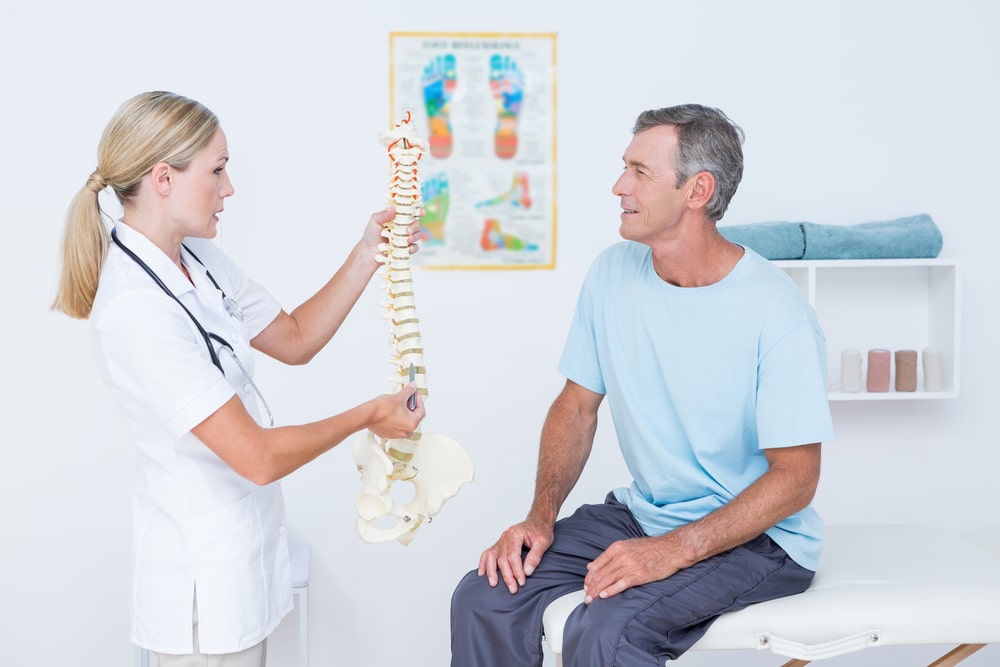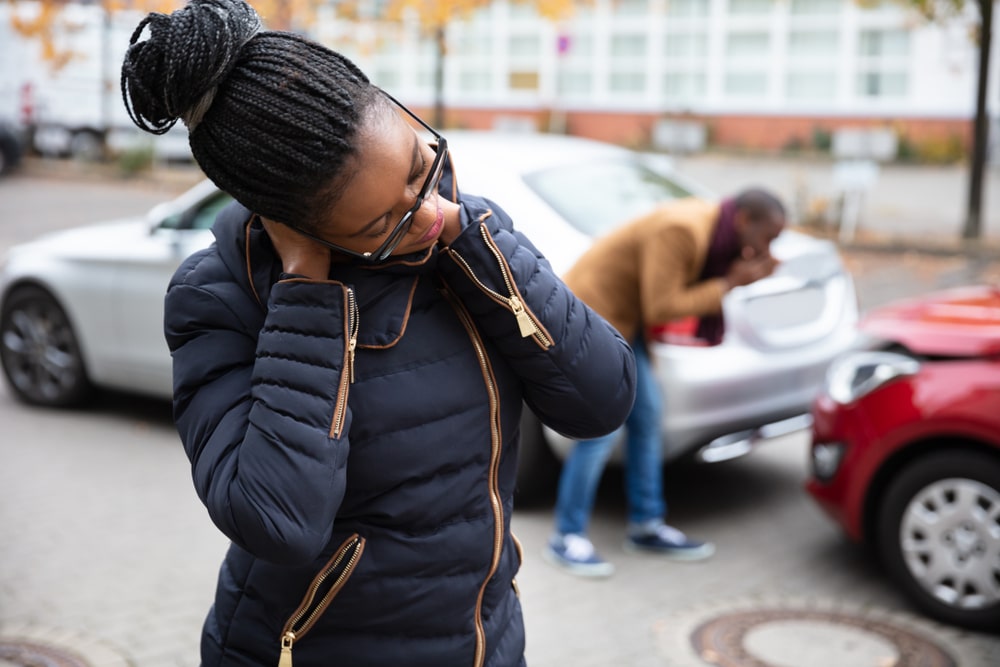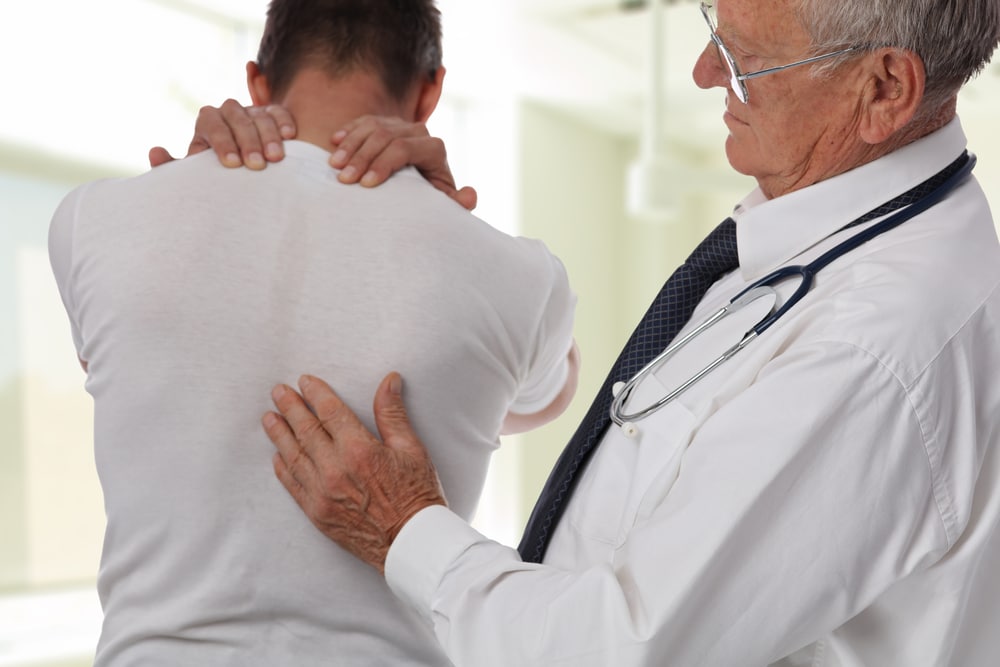While spine injuries are not the most common injuries caused by car accidents, motor vehicle accidents are a leading cause of spine injuries. Over 38% of all spinal cord injuries resulted from motor vehicle accidents between 2010 and 2018, with approximately 25% resulting specifically from automobiles rather than other vehicles such as motorcycles, boats, and industrial vehicles such as forklifts.
A car accident spine injury may involve either the musculoskeletal system or the neurological system, or both. For example, a displaced bone fracture may compress or otherwise damage the spinal cord, which can cause neurological symptoms including paralysis.
If the injury involves the neurological system, whether the spinal cord itself or the peripheral nerve roots, you may require treatment by a board-certified neurologist in Brooklyn, New York who specializes in neuromuscular medicine.
Where Is a Car Accident Spine Injury Most Likely to Occur?
When you were born, you had 33 distinct bones called vertebrae in your spine. As you grew up, between three and five coccygeal bones fused together to form the tailbone, and five more fused to form the sacrum or back of the pelvis. Because of these fusions, adults have 26 vertebrae in the spine.

Apart from the tailbone and sacrum, the remaining 24 vertebrae go into three different groups for purposes of classification:
- The cervical spine consists of seven vertebrae in the neck
- The thoracic spine consists of 12 vertebrae in the upper back
- The lumbar spine consists of five vertebrae in the lower back
A car accident spine injury is most likely to involve the lower back. However, the most severe injuries tend to occur in the cervical spine of the neck.
While injuries of the thoracic spine are certainly possible, they are not as common as injuries to the lumbar and cervical spine because it does not do as much flexing. Though you are less likely to experience a thoracic spine injury from a car accident, it could be more serious.
What Spine Injuries Are Most Likely To Occur from a Car Accident?
There are many different types of spine injuries that are possible from a car accident. Sometimes the accident is not the primary cause but an exacerbating factor. For example, spinal stenosis is a narrowing of the canal through which the spinal cord runs through the vertebrae. It may be asymptomatic prior to the accident, but symptoms start appearing afterward.
A car accident can also be a primary cause of a spinal cord injury, some of which are more common than others.
Whiplash-Associated Disorder
Whiplash is a term for the violent, back-and-forth, jerking motion of the head resulting from the force of impact from another vehicle colliding with yours, typically from the rear.
Whiplash-associated disorder refers to the pain and symptoms that result from the strain that the motion puts on the neck. Whiplash stretches out the muscles and ligaments in the neck but can also damage nerves, vertebrae, and intervertebral disks, which are flexible structures between the bones that serve as cushioning and shock absorbers.

The whiplash-associated disorder is a common occurrence after a car accident. It is usually more musculoskeletal in nature. Most people recover in a few weeks and have little, if any, need for a neurologist. However, if it does involve the spine, it may cause complications such as pain that spreads to the arms. Furthermore, the symptoms of whiplash may be similar to a more serious car accident spine injury.
Herniated Disks
Intervertebral disks work to cushion the vertebrae. They are a little like jelly donuts with a soft inner layer called the nucleus surrounded by a harder outer portion called the annulus. Trauma to the spine from a car accident can cause a tear in the annulus, allowing the soft material of the nucleus to leak out into the spinal canal.
The herniated material can put pressure on the spinal cord or the peripheral nerve roots, resulting in pain, weakness, or numbness in the extremities. Disk herniation can occur at any level of the spine, and the symptoms depend on the location. For example, if you have a herniated disk in the lumbar region, you may experience symptoms in your legs while a cervical herniated disk affects your arms.

Herniated disk symptoms can range in severity from mild to debilitating. Disk herniation can also be degenerative, i.e., resulting from wear and tear on your body over time. It sometimes occurs that you have a disk that has already undergone some degeneration and the trauma from a car accident completes the herniation.
A doctor usually does not recommend surgery as the first-line treatment for a herniated disk. Instead, he or she may first recommend conservative treatments. Medications, either prescription or over-the-counter, and physical therapy may help control pain. An injection of corticosteroids may help to relieve inflammation of the spinal nerves. The injection happens under imaging to avoid hitting the nerves or the spinal cord.

For an injured patient, moderate activity is the key to recovering from a herniated disk, using slow, controlled movements and resuming activities gradually, using pain as a guide, taking frequent breaks for about 30 minutes. Complete bed rest causes the muscles to become weak and the joints to become stiff, making movement more difficult and impeding progress.
If the pain does not improve or you have neurological symptoms, you may require surgery to treat your herniated disk. Most often, this involves removing just the portion that protrudes. In the rare cases that complete removal of the disk is necessary, the vertebrae adjacent to the disk may require a bone graft to fuse them together permanently.
Spondylolisthesis
Each of the vertebrae in the spine has its proper position. Trauma from a car accident can cause one of the lumbar vertebrae to destabilize, allowing it to slip out of place, narrowing the gap between it and the one below it. This can put pressure on the spinal cord and the nerve roots, resulting in neurological symptoms such as pain that radiates into the leg, numbness and tingling in the foot, or muscle spasms in the hamstrings.

There are several different types of spondylolisthesis. Traumatic spondylolisthesis is not the most common type. Degenerative spondylolisthesis, which is slippage that occurs over time, is much more common but not always symptomatic. However, the force of impact from a car accident may destabilize the vertebra even further and worsen spondylolisthesis, which may become symptomatic as a result.
A neurologist usually recommends conservative treatment options to treat spondylolisthesis at first. In addition to nonsurgical treatments such as physical therapy, medications, and rest, bracing to restrict unnecessary motion of the spine to allow healing may treat acute traumatic spondylolisthesis.
Based on severity, spondylolisthesis is either low-grade or high-grade. Low-grade spondylolisthesis is more likely to respond to conservative treatment. High-grade spondylolisthesis may require surgery to treat. Surgery for spondylolisthesis typically involves decompression to increase the space between the vertebrae and relieve the pressure on the spinal cord or the nerve roots. It may also involve fusion of the vertebrae to stabilize them and prevent further slippage. While the chance of recurrence is greater with a higher-grade injury, the success rate for surgery to correct it is very high.
Vertebral Fractures
Vertebral fractures can occur anywhere along the spine and can range in severity. They happen rather rarely in car accidents nowadays, thanks to improved safety equipment in cars. However, when they do occur, it is more likely to be in the most severe car accidents, meaning that the trauma to the spine is more often major. This is a dangerous situation because a severely broken fragment of one of the vertebrae could potentially sever the spinal cord, leading to complete or partial paralysis depending on the extent of the damage.

Even if a vertebral fracture does not result in paralysis, it could cause other potentially debilitating symptoms in the nervous system:
- Bowel and bladder incontinence or retention
- Sexual dysfunction
- Sensation changes or weakness in the limbs
The location and type of symptoms depend on the level of injury. If the injury occurs at the level of the lumbar spine, paralysis or other neurological symptoms may only affect the lower body, while a cervical spine injury could affect all four limbs.
While vertebral fractures from car accidents are relatively rare, there are different types that can occur. Flexion/distraction fractures can happen when the force of the collision pulls the vertebrae apart and is a risk when a seatbelt is holding the bottom part of the body still while the top part moves forward from the force of the impact.
With a compression fracture, the front part of the vertebra collapses on itself, causing it to form more of a wedge shape. A burst fracture is a rare but serious condition in which the vertebra breaks in multiple places at once, with fragments damaging the spinal cord.
Where Should You Go for Treatment Services from NY Neurologists?
The symptoms of a car accident spine injury may be subtle or dramatic. Because your condition may worsen without treatment, you should see a MD neurologist located in The Bronx, NY or Brooklyn, NY if you have any symptoms following a car crash that could relate to the spine. Contact us at Medical Clinics of New York City for general inquiries or to schedule an appointment for quality care from our doctors. Our practice accepts major medical insurance plans, no-fault and workers’ compensation. Same-day-appointments may be available.


